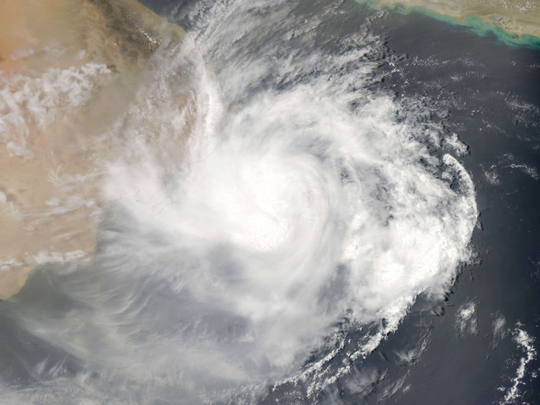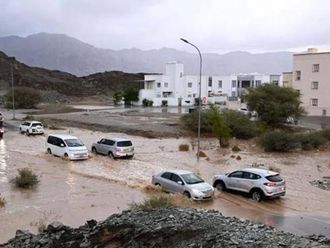
Muscat: The latest severe weather system to affect Oman, cyclone Ashobaa, highlighted the power of social media to enable preventive measures, facilitate rescue and relief operations, and share up-to-date information and images.
For the first time during the onset of a cyclone in the past ten years, no loss of life was reported when Ashobaa made landfall earlier this month, battering the north and south of the Sharqiyah governorate.
Previously, whenever there had been heavy rains in Oman, it had invariably resulted in death and injuries among nationals and residents, with many people venturing outdoors unawares of the inclement weather and crossing wadis.
Observers believe that social media platforms like Twitter, Facebook and WhatsApp played a major rule in keeping nationals and residents aware of the cyclone’s onset as well as the weather advisories.
More than ten hashtags were launched on Twitter about Ashobaa, with more than 12,000 tweets within five days.
Ahmad Al Busafi, a social media expert, told Gulf News that the social media platforms are not only a place to share pictures and information, but also very effective devices in educating and spreading awareness among people.
Al Busaifi added that the role of social media during Ashobaa was the perfect example about the power of the social media in educating all segments of the community about the cyclone and issuing advisories.
“It also showed the solidarity of nationals and residents, who flocked to the affected areas, provided them with food supplies, cleaning up roads and offering shleters for them in their houses,” said Al Busafi.
The cyclone saw the number of followers increase five per cent in official accounts like the Public Authority for Civil Defence and Ambulance (PACDA), the Royal Oman Police (ROP) and the Directorate General of Meteorology.
The Public Authority for Civil Defence and Ambulance (PACDA) tweeted in more than seven languages, advising nationals and residents to be more cautious during the storm, providing them with all the latest updates.
An official at the PACDA told Gulf News that social media played a tremendous role in informing residents about Ashobaa.
“We feel very happy after zero casuality reported, indicating the awareness of people and the power of the social media,” said the official.
Furthermore, the Directorate General of Meteorology tweeted hundreds of updates about the the cyclone.
The Royal Oman Police (ROP), too, tweeted about the perils of crossing wadis and offered tips for road users when it rains.
Oman TV, the state-owned channel, besides state and private radio stations and local newspapers also contributed to spreading awareness of the weather conditions. Media outlets also sent correspondents to the affected areas for live coverage of the cyclone.
Juma Al Muqbali, a national, told Gulf News that Oman TV and radio stations ensured coverage of the cyclone around the clock.
“My heart went out to those families in Sharqiyah governorates after many houses were flooded due to the cyclone,” Al Muqbali said.
Others said that people had also become more aware about the cyclones as they had previous painful experiences.
Salim Al Beloushi, a social worker, said that many residents of Sharqiyah had experienced three cyclones before, lost dozens of their loved ones, which made them more cautious and better prepared.
Ashobaa caused damage running into hundreds of thousands of Omani rials.
Many houses in Sabakh and Janah in the province of Sur were damaged due to flooding. Most of those affected were low-income families.
More than 109 persons were rescued in Sur province by the Public Authority for Civil Defence and Ambulance, Royal Oman Police and the Royal Army.
Seventy people were killed in the two previous cyclones, Cyclone Gonu in June 2007 and Phet in June 2010.










